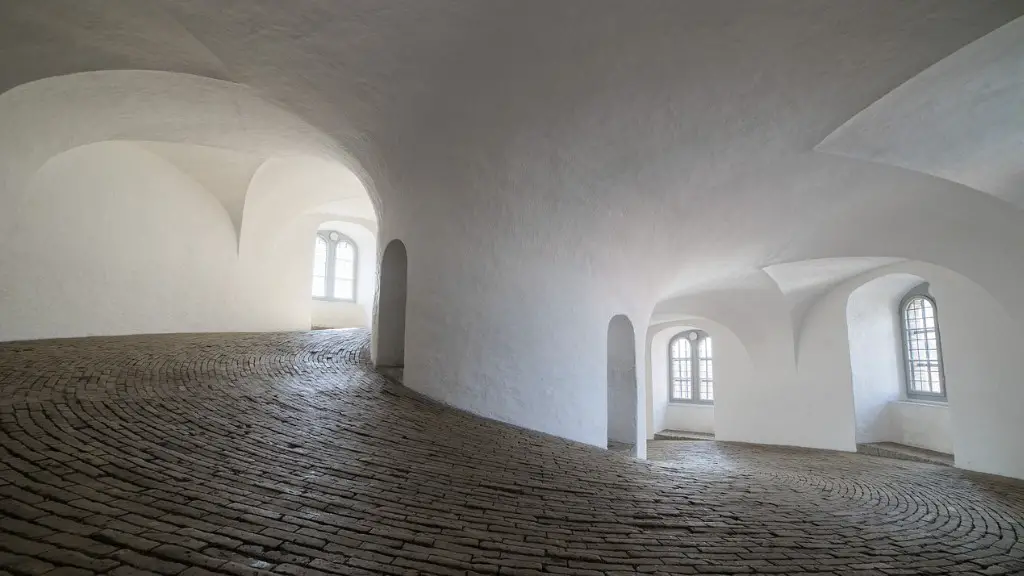When it comes to applying to landscape architecture programs or jobs, one of the most important things you can do is create a strong portfolio. But what exactly should you include in your portfolio? And how can you make sure it stands out? In this guide, we’ll go over everything you need to know about creating a landscape architecture portfolio that will impress.
A landscape architecture portfolio typically contains a selection of projects that showcase the designer’s skills, style, and range. It is important to tailor the portfolio to the specific audience, whether that be potential employers or clients.
When deciding what projects to include, it is helpful to consider the following:
– The purpose of the portfolio: Is it to demonstrate your technical skill? Your conceptual thinking? Your ability to communicate complex ideas?
– The audience: Who will be looking at the portfolio? Potential employers? Clients?
– The style: How do you want to present your work? As a series of images? Drawings? Mockups?
Once you have a clear idea of what you want to include, you can begin compiling your project materials. For each project, you will want to include:
– A description of the project, including its location, scale, program, and any other relevant information
– Images of the project, including site plans, drawings, sketches, and photographs
– A written analysis of the project, discussing your role in the design process, the challenges you faced, and the solutions you developed
When putting together your portfolio, remember to keep your audience in mind and focus on presenting your work in
Do you need a portfolio for landscape architecture?
A well-developed design portfolio is essential whether you are just starting your journey into the workforce or looking to pursue a Master’s Program in Landscape Architecture. Your portfolio should showcase your skills and highlight your unique strengths and abilities. It is important to remember that your portfolio is a work in progress and should be updated regularly as you gain new experience and skills.
The portfolio format should include the applicant’s name and contact information, a table of contents, and a description of the applicant’s individual contribution to any group or professional design projects. The portfolio should also include academic, personal, and/or professional projects. Each project should include the project title and date.
How to create an architecture portfolio
If you’re an architect, having a strong portfolio is essential to your success. Here are 10 tips to help you create a winning portfolio:
1. Listen to the audience. Your portfolio should be tailored to your target audience. Whether you’re seeking a job with a specific firm or applying to graduate school, make sure your portfolio is appropriate for the audience you’re targeting.
2. PDF or Online portfolio, Which one is better for you? This is a matter of personal preference. If you’re comfortable with technology and feel confident that your work will be viewed online, then an online portfolio may be the way to go. If you prefer a more traditional approach or are worried about the potential for technical problems, then a PDF portfolio may be the better option.
3. Create an appealing CV page. Your portfolio should include a CV page with your contact information and a brief summary of your education and experience.
4. Select your best projects. When choosing which projects to include in your portfolio, be selective. Include only your best work, and be sure to showcase a variety of projects that demonstrate your range as an architect.
5. Less is more. A portfolio that is too large or contains too much information can be overwhelming for
This type of portfolio is typically used for carrying artwork or other documents and is available in two different sizes. The 85″x11″ size is the more popular option and can be found at most local arts and crafts stores. The 11″x17″ size is less common, but may be a better option for carrying larger documents or artwork.
Is there a shortage of landscape architects?
Since 2020, employers across industries have seen droves of employees leaving nationwide. This has been a shock to many employers who are now scrambling to fill these vacancies. This trend seems to be continuing into 2021, so employers need to be prepared. They should start by looking at their own policies and procedures to see if there are any areas that need improvement. They also need to be more flexible with their employees and understand that people have different needs now than they did before the pandemic. Lastly, they need to be prepared to offer more competitive salaries and benefits in order to attract and retain the best employees.
The principles of landscape design include the elements of unity, scale, balance, simplicity, variety, emphasis, and sequence as they apply to line, form, texture, and color. These elements are interconnected and work together to create a pleasing landscape design.
What are 5 things a great portfolio includes?
Personal Information: When creating your portfolio, you should include basic personal information such as your name, address, and contact information. You may also want to include a photo of yourself.
Values: What are your core values? What do you believe in? including this information in your portfolio can help give employers a better understanding of who you are and what you stand for.
Personal Goals and History: What are your long-term career goals? What is your work history? Including this information in your portfolio can help employers understand your career aspirations and what skills and experience you have to offer.
Accomplishments and Job History: What have you accomplished in your previous roles? What are some of the jobs you have held? This information can help employers see the value you have added in the past and the types of roles you are qualified for.
Skills and Attributes: What skills and attributes do you have that would be relevant to the job you are applying for? This information can help employers see if you have the skills and attributes they are looking for.
Education and Training: What is your education and training? What courses have you taken? This information can help employers understand your qualifications and whether you have the necessary training for the job
Firmitas, utilitas, venustas – these are the three key concepts that underpin the idea of good architecture. Firmitas refers to the strength and durability of a structure, utilitas to its usefulness and functionality, and venustas to its aesthetic appeal and ability to raise people’s spirits. architecture that is both functional and beautiful is highly prized, and architects strive to achieve this ideal in their work.
How many projects should be in an architecture portfolio
If you have more than five projects, your audience may lose focus. Try to limit the number of projects to keep your audience engaged.
There are a number of advantages to becoming a consultant as an architect. First of all, you can earn six figures or more in this role. Additionally, you don’t need to stamp any drawings, which can save you a lot of time and hassle. Furthermore, as a consultant you can offer your services to a number of different clients, giving you a lot of flexibility and freedom. Finally, being a consultant can be a great way to learn more about the industry and to stay up-to-date on the latest trends.
Should an architecture portfolio be portrait or landscape?
Certain types of architectural portfolios are more likely to be in landscape format than others. This is because landscape format allows for a more expansive view of the project as a whole, which can be beneficial for certain types of architectural portfolios. In terms of font types, it is generally recommended to use a maximum of three different varieties in order to maintain legibility. And finally, perhaps one of the most important points to keep in mind: it is important to have underlying geometric order in a landscape architectural portfolio.
Start by sketching out a rough idea of the floor plan. This doesn’t have to be perfect, but it will give you a general idea of the layout.
2. Decide on the overall size and shape of the floor plan. This will likely be determined by the size and layout of the room or rooms you’re working with.
3. Map out where all the doors and windows will be located. This is important for both functional and aesthetic purposes.
4. Decide on the placement of key furniture pieces. Again, this is for both functional and aesthetic purposes.
5. Create a scale for your floor plan. This will ensure that everything is properly proportioned.
6. Draw in all the details. This includes things like outlets, switches, and fixtures.
7. Make sure to label everything clearly. This will help you and others understand the floor plan more easily.
What are the 4 basic types of landscape architecture practices
There are many different types of landscape architecture, each with its own distinct focus. Site planning is all about using a piece of land in the most efficient way possible, taking into account things like traffic flow, zoning, and utilities. Urban design is concerned with thelook and feel of cities and towns, and how to create livable, vibrant spaces. Land development is the process of transforming raw land into developed land, ready for construction. Parks and recreation landscape architecture focuses on creating outdoor spaces that are enjoyable and inviting, while also being sustainable. Ecological and environmental landscape architecture is concerned with protecting and restoring natural ecosystems. And finally, heritage conservation landscape architecture works to preserve historic sites and landmarks.
According to the latest data from the United States Bureau of Labor Statistics, there are over 16,072 landscape architects currently employed in the country. This is a relatively small occupation, with only 0.1% of all working Americans employed as landscape architects. However, the field is growing rapidly, with employment expected to grow by 24% over the next ten years.
Interestingly, the gender split in landscape architecture is very different from the overall workforce. In landscape architecture, 245% of all employed professionals are women, while only 755% are men. This is a much higher proportion of women than in the workforce as a whole, where only 47% of workers are women. The average age of an employed landscape architect is 43 years old.
Is landscape architecture a stressful job?
It is important to manage your time well when pursuing landscape architecture, as architects tend to leave and rush things to the last minute. This can lead to undue stress and anxiety. Try to work on your time management skills to avoid this.
The landscape architect profession is growing in the state of California. The average hourly mean wage for landscape architects in California is $4312. This is higher than the average hourly mean wage for landscape architects in other states such as Florida, Colorado, and New York. The landscape architect profession is expected to grow in popularity and demand in California due to the state’s growing population and economy.
Final Words
There is no single answer to this question as the best way to create a landscape architecture portfolio will vary depending on the individual and the type of work they are trying to showcase. However, some tips on how to make a landscape architecture portfolio may include:
– Use high-quality images that accurately represent your work
– Organize your portfolio in a way that is easy to navigate and understand
– Highlight your best work and make sure to explain the thinking behind it
– Use a mix of written and visual content to break up the portfolio and keep it interesting
– Keep the portfolio up-to-date with your latest work
A landscape architecture portfolio can be a great way to showcase your work and attract new clients. There are a few things you should keep in mind when creating your portfolio. First, make sure to showcase a variety of your work. Prospective clients will want to see the range of your skills. Second, keep your portfolio up to date. Be sure to add new projects as you complete them. Lastly, tailor your portfolio to your audience. Keep in mind who you are showing your portfolio to and what they are looking for. By following these tips, you can create a strong landscape architecture portfolio that will help you get the clients you want.





